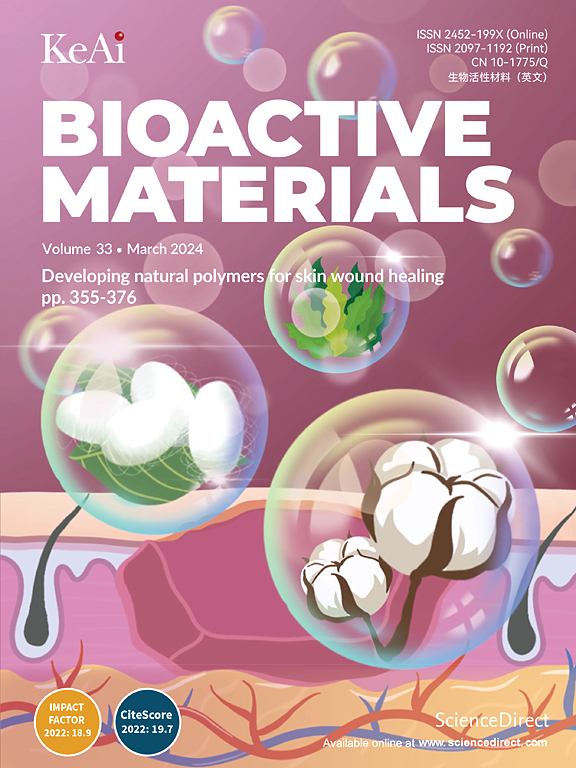Polylactic acid electrospun membranes coated with chiral hierarchical-structured hydroxyapatite nanoplates promote tendon healing based on a macrophage-homeostatic modulation strategy
IF 18
1区 医学
Q1 ENGINEERING, BIOMEDICAL
引用次数: 0
Abstract
Tendon injury is a common and challenging problem in the motor system that lacks an effective treatment, affecting daily activities and lowering the quality of life. Limited tendon regenerative capability and immune microenvironment dyshomeostasis are considered the leading causes hindering tendon repair. The chirality of biomaterials was proved to dictate immune microenvironment and dramatically affect tissue repair. Herein, chiral hierarchical structure hydroxylapatite (CHAP) nanoplates are innovatively synthesized for immunomodulatory purposes and further coated onto polylactic acid electrospinning membranes to achieve long-term release for tendon regeneration adaption. Notably, levorotatory-chiral HAP (L-CHAP) nanoplates rather than dextral-chiral or racemic-chiral exhibit good biocompatibility and bioactivity. In vitro experiments demonstrate that L-CHAP induces macrophage M2 polarization by enhancing macrophage efferocytosis, which alleviates inflammatory damage to tendon stem cells (TDSCs) through downregulated IL-17-NF-κB signaling. Meanwhile, L-CHAP-mediated macrophage efferocytosis also promotes TDSCs proliferation and tenogenic differentiation. By establishing a rat model of Achilles tendon injury, L-CHAP was demonstrated to comprehensively promoting tendon repair by enhancing macrophage efferocytosis and M2 polarization in vivo, finally leading to improvement of tendon ultrastructural and mechanical properties and motor function. This novel strategy highlights the role of L-CHAP in tendon repair and thus provides a promising therapeutic strategy for tendon injury.
求助全文
约1分钟内获得全文
求助全文
来源期刊

Bioactive Materials
Biochemistry, Genetics and Molecular Biology-Biotechnology
CiteScore
28.00
自引率
6.30%
发文量
436
审稿时长
20 days
期刊介绍:
Bioactive Materials is a peer-reviewed research publication that focuses on advancements in bioactive materials. The journal accepts research papers, reviews, and rapid communications in the field of next-generation biomaterials that interact with cells, tissues, and organs in various living organisms.
The primary goal of Bioactive Materials is to promote the science and engineering of biomaterials that exhibit adaptiveness to the biological environment. These materials are specifically designed to stimulate or direct appropriate cell and tissue responses or regulate interactions with microorganisms.
The journal covers a wide range of bioactive materials, including those that are engineered or designed in terms of their physical form (e.g. particulate, fiber), topology (e.g. porosity, surface roughness), or dimensions (ranging from macro to nano-scales). Contributions are sought from the following categories of bioactive materials:
Bioactive metals and alloys
Bioactive inorganics: ceramics, glasses, and carbon-based materials
Bioactive polymers and gels
Bioactive materials derived from natural sources
Bioactive composites
These materials find applications in human and veterinary medicine, such as implants, tissue engineering scaffolds, cell/drug/gene carriers, as well as imaging and sensing devices.
 求助内容:
求助内容: 应助结果提醒方式:
应助结果提醒方式:


